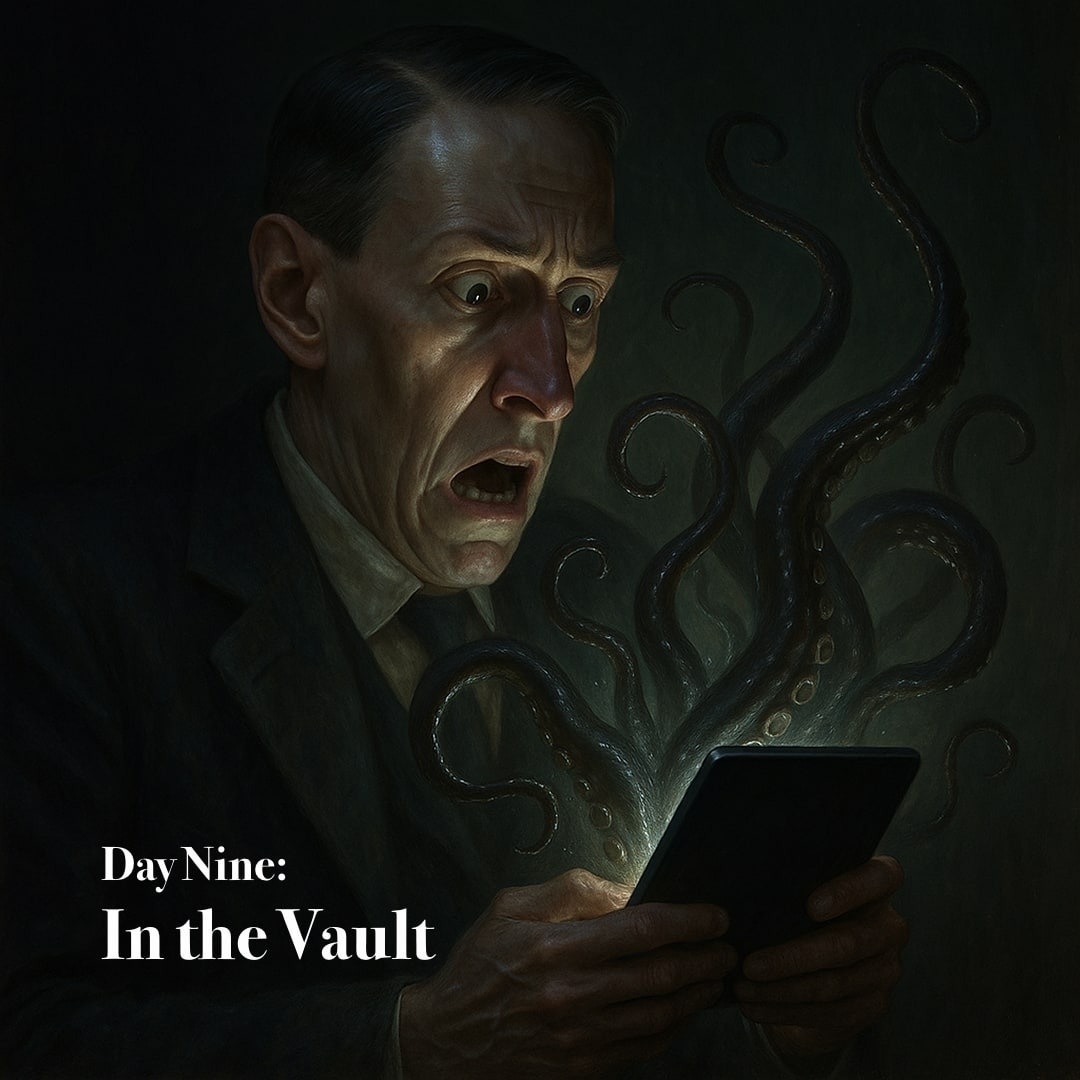In the Vault

As I perused that dread chronicle known as I “In the Vault”, a curious recognition seized me, as though some dim recess of memory stirred from a half-forgotten dream. The tale, though brief, possesses a potency that lingers like the scent of disturbed earth. Shameful though my confession be, I had long ascribed its authorship to that latter-day conjurer of horrors, Stephen King. Yet such an error, I think, may be forgiven; for “In the Vault” bears that unmistakable taint of the macabre moderns, whose art descends directly from Lovecraft’s own unhallowed lineage. Indeed, one might imagine the tale’s yellowed pages lying amidst the ghastly pulps of Eerie or Creepy, whispering of graveyards and the restless dead.
In the ill-omened hamlet of Peck Valley, George Birch, the coarse and careless undertaker, found himself imprisoned within the winter vault, where coffins lie stacked until the thaw permits burial. Desperate for escape, he piled those grim boxes beneath a transom, yet the weight of his blundering frame shattered the lid of a frail casket. His ankles sank into the rotting receptacle, torn and mangled as he clawed his way to freedom.
Later inquiry by Dr. Davis revealed the ghastly truth. That coffin, crudely fashioned and ill-suited, had been pressed into service for the malignant Asaph Sawyer, whom Birch had long despised. The box was built for the smaller Matthew Fenner, and to make Sawyer fit, Birch had hewn away the feet with barbarous indifference. The wounds upon Birch’s ankles were no accident of splintered wood, but the livid imprints of Sawyer’s vengeful teeth, sunk into living flesh from beyond the veil of death.
The tale, conceived in 1925 from a suggestion by Charles W. Smith, to whom Lovecraft dedicated it, was deemed too gruesome for Weird Tales and spurned by Ghost Stories. Only in April of 1932, through August Derleth’s urging, did it find print in Weird Tales. Critics, surveying it coldly, have judged it a lesser work, an attempt at rustic horror and colloquial tone that failed to capture the grandiose dread of Lovecraft’s greater visions. Yet within its humble frame stirs the same eternal theme: that the grave does not always yield forgiveness, and the dead may gnash their teeth in dreadful recompense.